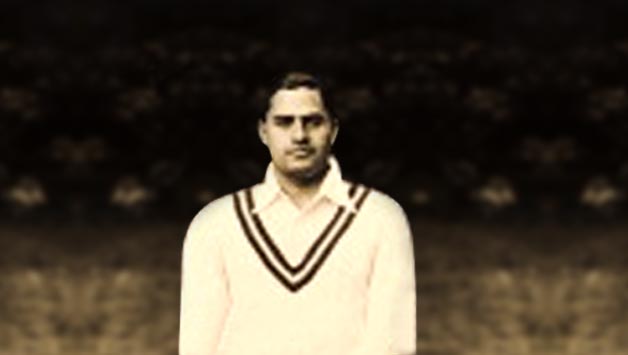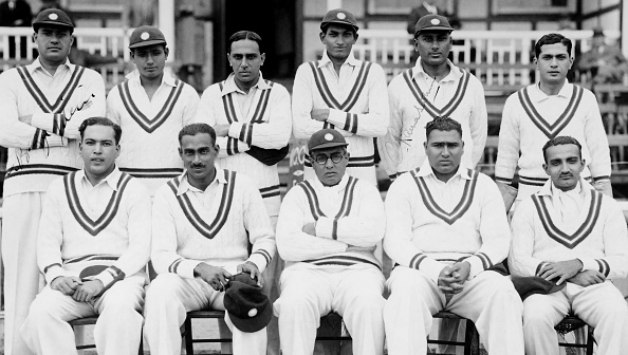Jalandhar, PUNJAB :
Baqa Jilani was the first bowler to take a hat-trick in Ranji Trophy.

Baqa Jilani, born July 20, 1911, was the first bowler to take a hat-trick in Ranji Trophy. Abhishek Mukherjee looks at a man controversial in life and death.
Had Mohammad Baqa Khan Jilani been a more renowned person, they would probably have made a movie on him. In fact, though he did not live to see an age of 30, he had a life too eventful to ignore, both on and off the field. He played in an era when India were in its nascent stage of Test cricket, and could have had a significant career had he not been plagued by numerous physical ailments.
Baqa Jilani was a decent batsman with 928 runs at 18.56 with a hundred from 31 First-Class matches. For a man of 6 feet it was surprising that he bowled leg-breaks and medium-paced leg-cutters, but he captured 83 wickets at 19.93 with 3 five-fors and a ten-for; if we go by the usual definition of a good all-rounder (the closer the batting and bowling averages are to each other, the better the all-rounder he is) then his numbers were certainly not poor.
“There was no doubting his class,” wrote David Frith. Charlie Macartney hailed him a “champion”. Despite that, Baqa Jilani is known more for his off-the-field activities than his class.
He also played a solitary Test with not much of an impact, but more of that later.
Early days
Born in Jullundur, Baqa Jilani made his First-Class debut for Northern India in 1934-35. It was as spectacular a debut as one can think of: opening bowling he routed Sind for 114 and 155 with figures of 7 for 37 (his best figures) and 5 for 50, making it his only First-Class ten-wicket haul. Playing against Parsees in the Bombay Quadrangular next month he returned figures of 4 for 30 and 3 for 55, leading Muslims an innings victory.
Then came the big match, against Southern Punjab: Northern India scored 142 before Baqa Jilani’s 4 for 46 gave them an 11-run lead. Then, when Southern Punjab were set a target of a mere 118, he took charge: Dev Puri and Amir Elahi contributed in bowling out the opposition (that had five cricketers who played Tests at some point of time or the other) for 22, which remained the lowest Ranji Trophy score till 2010-11.
Baqa Jilani, however, stole the show with figures of 4.1-1-7-5. In the process he also registered the first hat-trick in Ranji Trophy, dismissing Joginder Singh, Yuvraj of Patiala, and Lall Singh.
The next season started on a high note as well. Baqa Jilani claimed 2 for 45 and 4 for 16 in the first “Test” against the touring Australians at Lahore. There was also a 4 for 32 against Delhi at Kotla, and a consecutive second season with the ball earned Baqa Jilani a spot on the 1936 tour of England.
Baqa Jilani’s bowling was never the same. His first two seasons, which included 16 matches, had resulted in 66 wickets at 15.85. The next 15 yielded a mere 17 at 35.82.
The controversial Test debut
The murk of the 1936 tour has been discussed at lengths by every student of Indian cricket. Once Maharajkumar of Vizianagram had his way to national leadership, he had his way in every possible matter throughout the Test series. He led India in all three Tests and scored 33, but his antics had a deeper impact in dampening the spirit of the squad.
Sending Lala Amarnath back home was enough to set any team back, but Vizzy went a bit further: he had created a rift in the dressing-room, splitting the team into two sections. The majority of the team backed CK Nayudu as the obvious leader, much to Vizzy’s dislike: he wanted his way, and slowly created a band of loyal supporters.
Mushtaq Ali later wrote in Cricket Delightful: “It may not be possible today to apportion the respective parts played by the captain and the manager, but the job was successfully done with Nissar, Dilawar Hussain, Baqa Jilani Khan and PE Palia effectively estranged from CK Nayudu. Costly and lucrative presents were lavishly distributed to favourites by the Maharajkumar and this created further rifts in the team.”

Back, from left: Baqa Jilani, Lala Amarnath, Syed Mohammad Hussain, Mushtaq Ali, Cotar Ramaswami, Khershed Meherhomji (wk)
Front, from left: Phiroze Palia, CK Nayudu, Vizzy (c), Mohammad Nissar, Vijay Merchant
One of these was Mohammad Nissar : when Vizzy was being knighted, news had gone out that Nayudu was leading Indians to a victory against Lancashire at Liverpool. Vizzy cabled Nissar to bowl full-tosses; the moment Nayudu realised what was going on, he took Nissar off, and won the match for the tourists himself in a partnership with Jahangir Khan.
This did not go very well with Vizzy. He took things a bit too far. As Mihir Bose wrote in A History of Indian Cricket, “Those in the Vizzy party received all sorts of favours including a trip to Paris and they could curry favour with Vizzy by insulting Nayudu.”
On the morning of the Test, Baqa Jilani obliged. Ramachandra Guha later in Wickets in the East: “Shute was replaced by Baqa Jilani [a vastly inferior cricketer] for the Oval Test of 1936 only because Jilani had fulfilled his captain Vizzy’s desire by abusing CK Nayudu at the breakfast table.”
Mushtaq was in agreement: “It was widely believed that Baqa Jilani Khan earned his place in the third Test by fulfilling the condition of insulting CK Nayudu in the presence of other players inside the dressing room. In fact, when the team was announced Shute Banerjee had been shown among the first eleven players with Baqa Jilani specifically mentioned as the 12th man.”
Bose’s version was the same: “Baqa Jilani did that [insulted CK Nayudu] before the Oval Test: coming down to breakfast one day he insulted Nayudu and was rewarded with his first Test cap.”
Boria Majumdar’s version in Lost Histories of Indian Cricket: Battles Off the Pitch is slightly different, but he is in agreement with Baqa Jilani’s action: “With Vizzy forever keen to humiliate Nayudu, he had even ordered Baqa Jilani to abuse Nayudu at the breakfast table promising him his maiden Test cap if he carried out the orders.”
Baqa Jilani played at The Oval — a Test that started, somewhat ironically, on August 15, exactly 11 years before India’s Independence. He conceded 55 runs from 15 overs, being at the receiving end of a majestic 217 from Wally Hammond; and as India plummeted to an innings defeat and a 0-2 loss in the series, Baqa Jilani scored four not out and 12. He never played another Test.
It was not a great tour for him either. He scored the only hundred of his career against Leicestershire, scoring 113 and taking the score from 233 for 7 to 426, and added 24* and 2 wickets for good measure. Against Gloucestershire he scored 59 not out and returned match figures of 5 for 78, but he failed in the other ten matches he played.
The final few matches and deteriorating health
Baqa Jilani career lasted for three more matches after his return. He missed the winter of 1936-37, but did a decent job the next season with 4 for 33 against United Provinces and 74 against Southern Punjab, both at Patiala. By this time illness had already been creeping in.
In Personalities of the 1936 Tour of England, Cota (or Cotah, or Cotar) Ramaswami had written of Baqa Jilani’s strange behaviour: “Nobody could say when he was normal and when he got into uncontrollable temper. He was constantly undergoing treatment during the tour.” He suffered from high blood pressure, insomnia, and somnambulism. He was also an epileptic.
In Silence of the Heart: Cricket Suicides David Frith cited more incidents: “During the Indians’ final match (of the 1936 tour), against Indian Gymkhana at Osterley, Jilani viciously hurled the ball at his friend Gopalan and displayed temper when moved from slip to cover [Ramaswami was captain for this game]. Baqa Jilani sat down in the field, kicked the ball towards the boundary instead of fielding it and deliberately threw wide of the bowler.”
Ramaswami did not react. As he wrote in Ramblings of a Games Addict, “knowing fully well that he was slightly off his head, I ignored his presence in the field.”.
He came back to play a single match — his last — in 1938-39 against Hindus in the final of the Lahore tournament but did not do much of note.
Personal life and controversy regarding death
Baqa Jilani was the brother-in-law of Jahangir Khan, and was an Extra Assistant Commissioner in Jullundur. In 1941 he suffered an epileptic fit, fell down from the balcony of his residence, and met with an instant death eighteen days before his 30th birthday. He was the second Indian Test cricketer to die after Amar Singh (who had passed away on May 21, 1940); he also remains the second-youngest Indian Test cricketer to die after Amar Singh (29 years 169 days).
The report of Baqa Jilani’s death was published in Indian Express as the same. Strangely, there were rumours that he had hanged himself out of depression.

It was not until much later that the truth came out (though Indian Express archives were always available). As Frith wrote, “The great Vijay Merchant told statistician Anandji Dossa, who told young writer Mudar Patherya, who told the author, that Jilani had suffered an epileptic fit, lost his balance on the veranda of his house in Jullundur and fallen to his death.”
(Abhishek Mukherjee is the Deputy Editor and Cricket Historian at CricketCountry. He blogs here and can be followed on Twitter here .)








